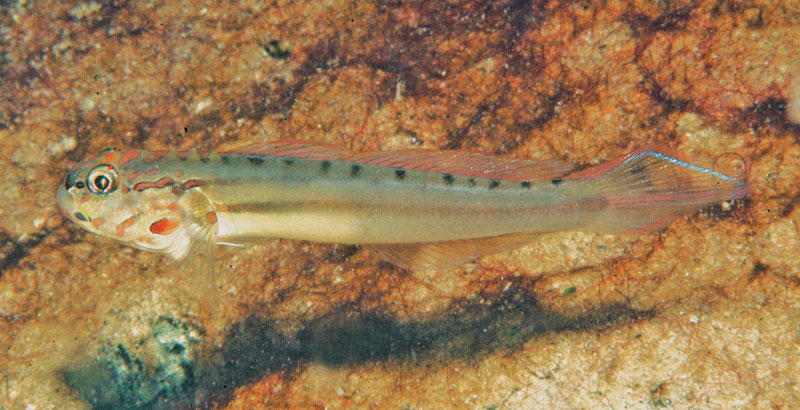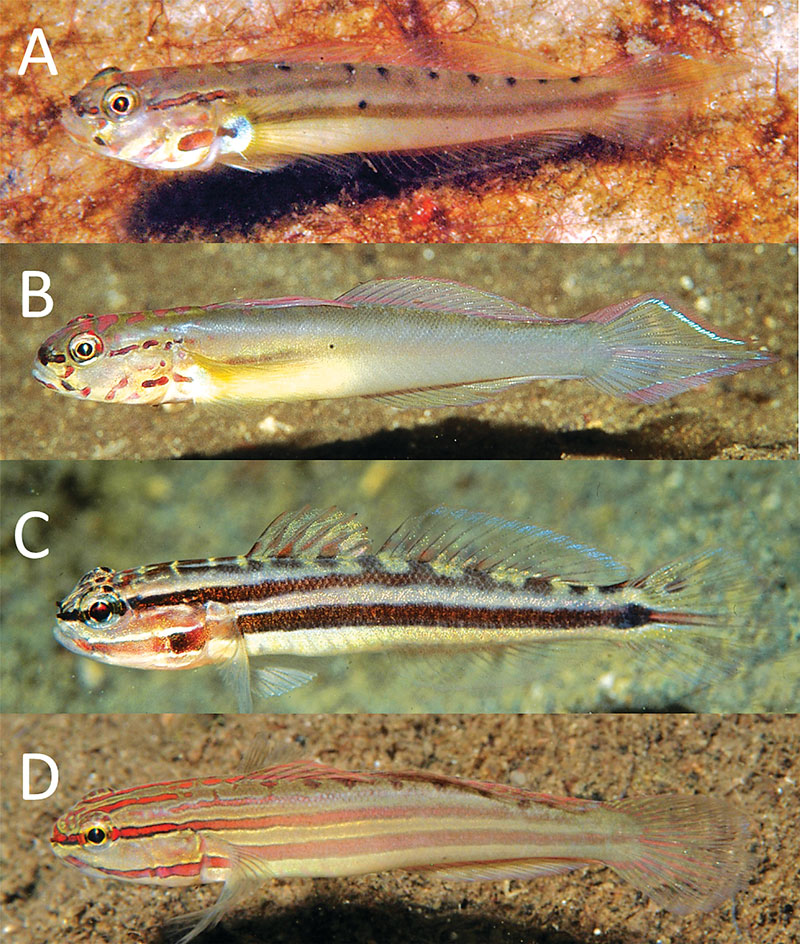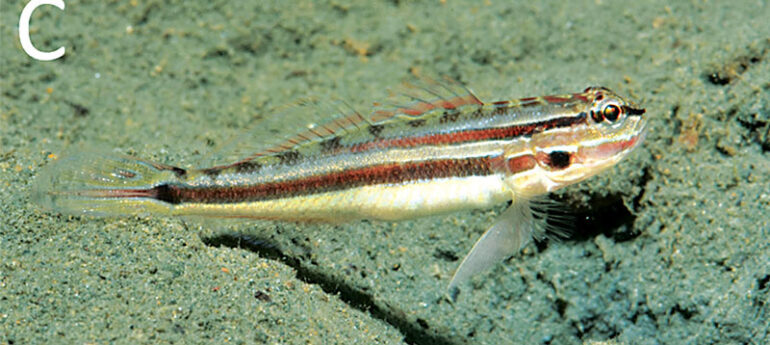Amblygobius cheraphilus and A. calvatus are two new species of cute small gobies, and we’re just glad to see some new goby species that aren’t Eviota or Trimma. Closely related to our beloved aquarium favorites the Hector’s, Rainford’s and Link gobies, the two new species sport a familiar pattern that could definitely shine in an aquarium environment.
The two new species of gobies were discovered in the western Pacific Ocean, with Amblygobius calvatus hailing from Palawan, Philippines, and Amblygobius cheraphilus coming from Papua New Guinea. Thankfully these are not some obscure cryptic species of gobies and they have some pretty colors and patterns unto themselves.

The Filipino Amblygobius calvatus is a particularly attractive new species; it has a smooth greyish brown body color with a faint body stripe, and series of spots on its back, just under the dorsal fin. But what makes this fish standout is its colorful stripes and adornments around the face, it looks very similar to Amblygobius esakiae, but that species lacks the body stripe and spots.
Meanwhile Amblygobius cheraphilus from Papua New Guinea looks like a perfect cross between A. linki and A. nocturnus. The former has thick black stripes on a white body, the latter has thin red stripes on a blueish olive body, and the new species has a blend of these features.
Amblygobius cheraphilus sports a cream colored body with strong maroon colored bars. The type specimen for the description of this new goby was collected in Milne Bay, Papua New Guinea, but it appears to have been documented in photographs in Japan, Bali and Flores, and might be widespread in distribution. The two new goby species are described by Allen & Erdmann in the 24th volume of the Journal of the Ocean Science Foundation.




